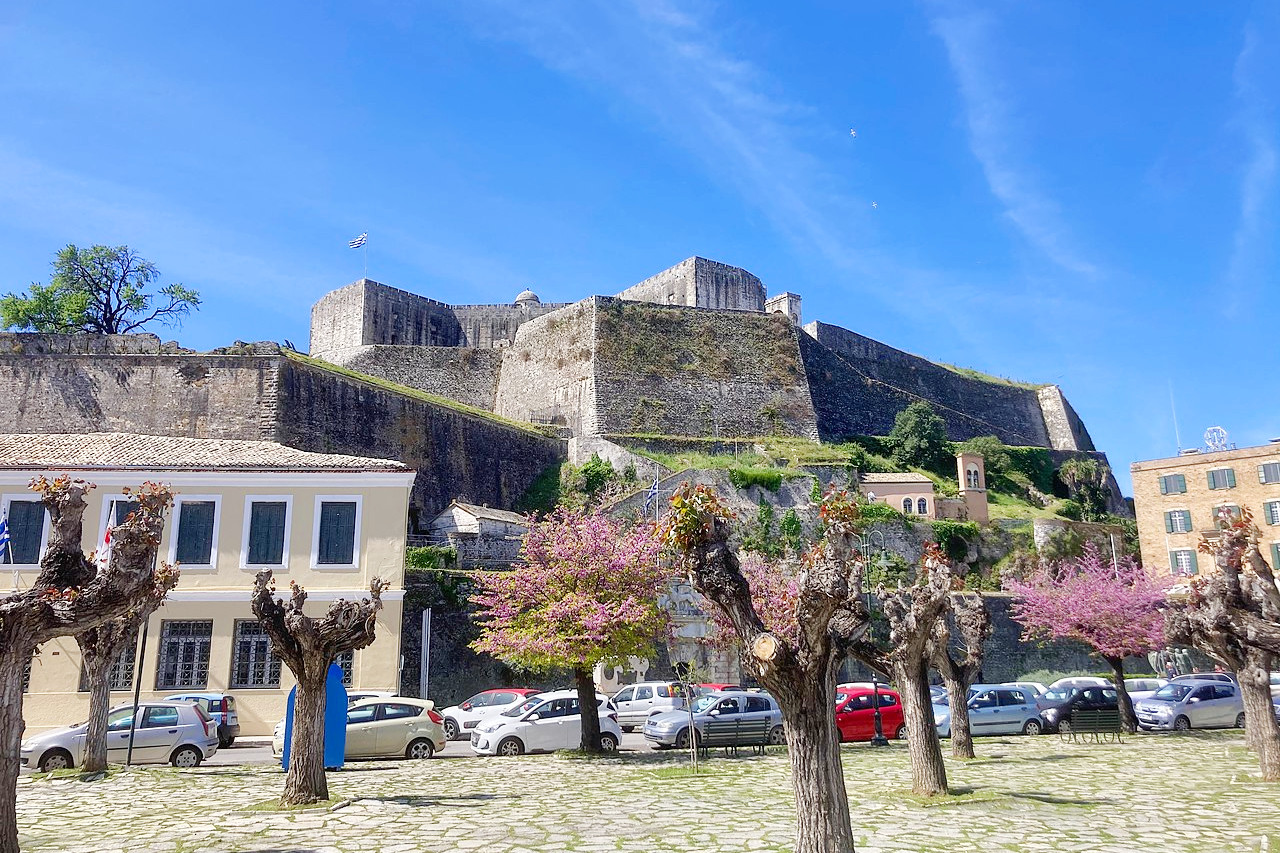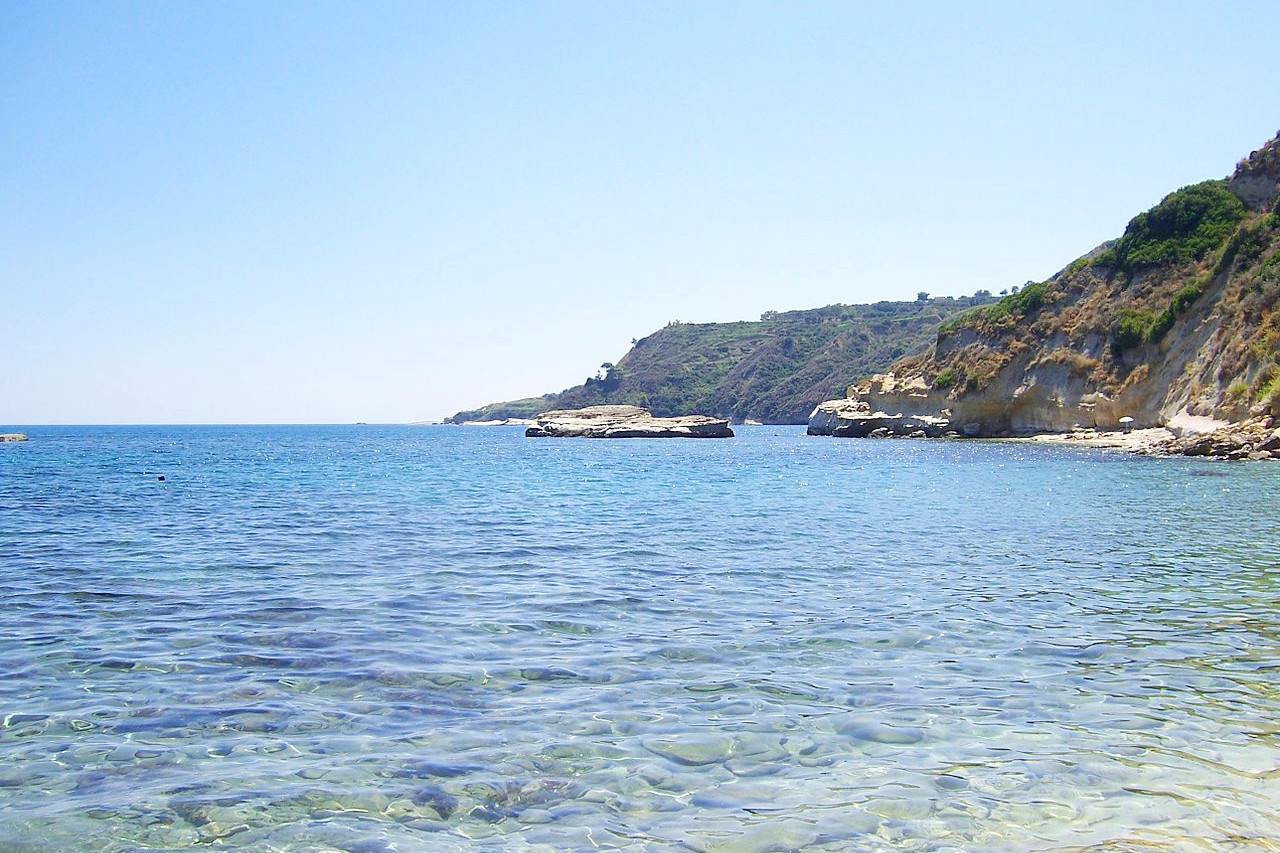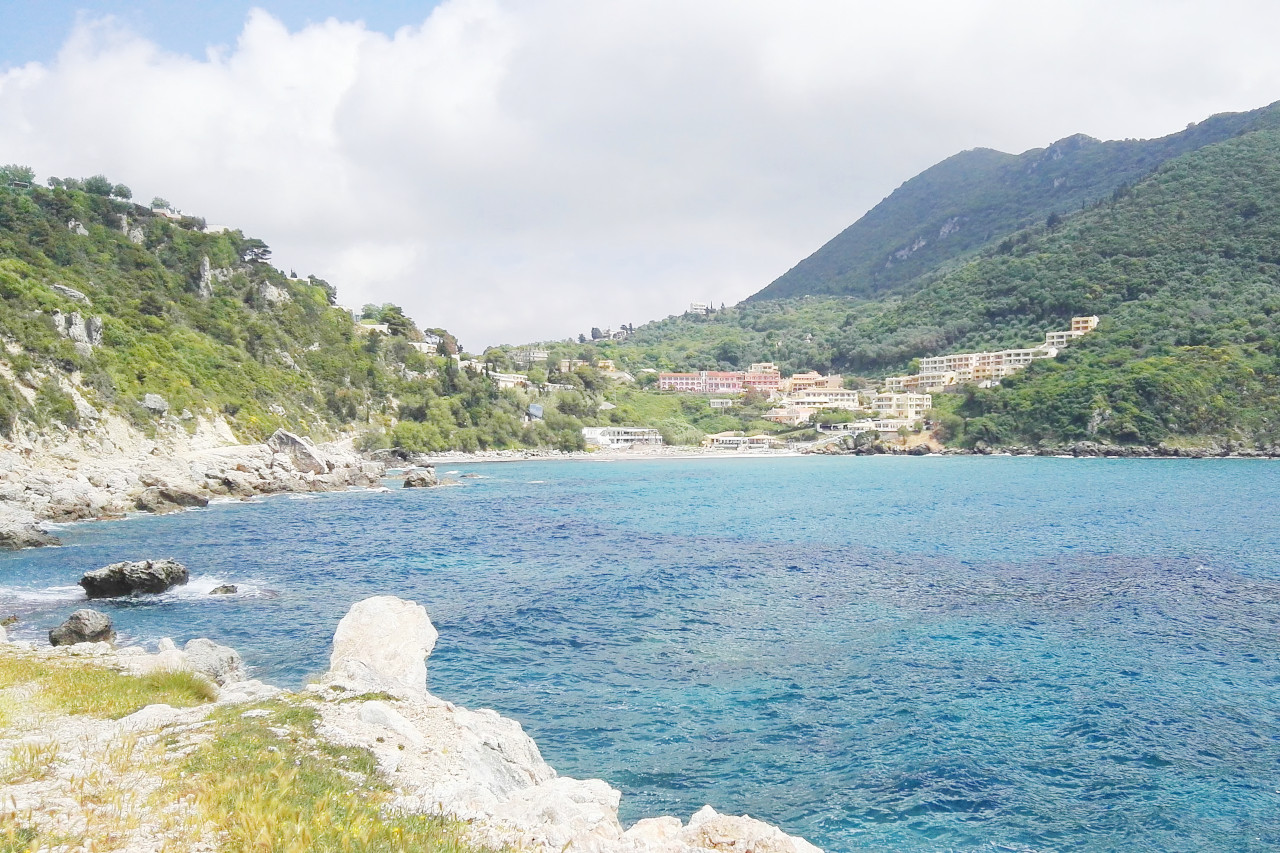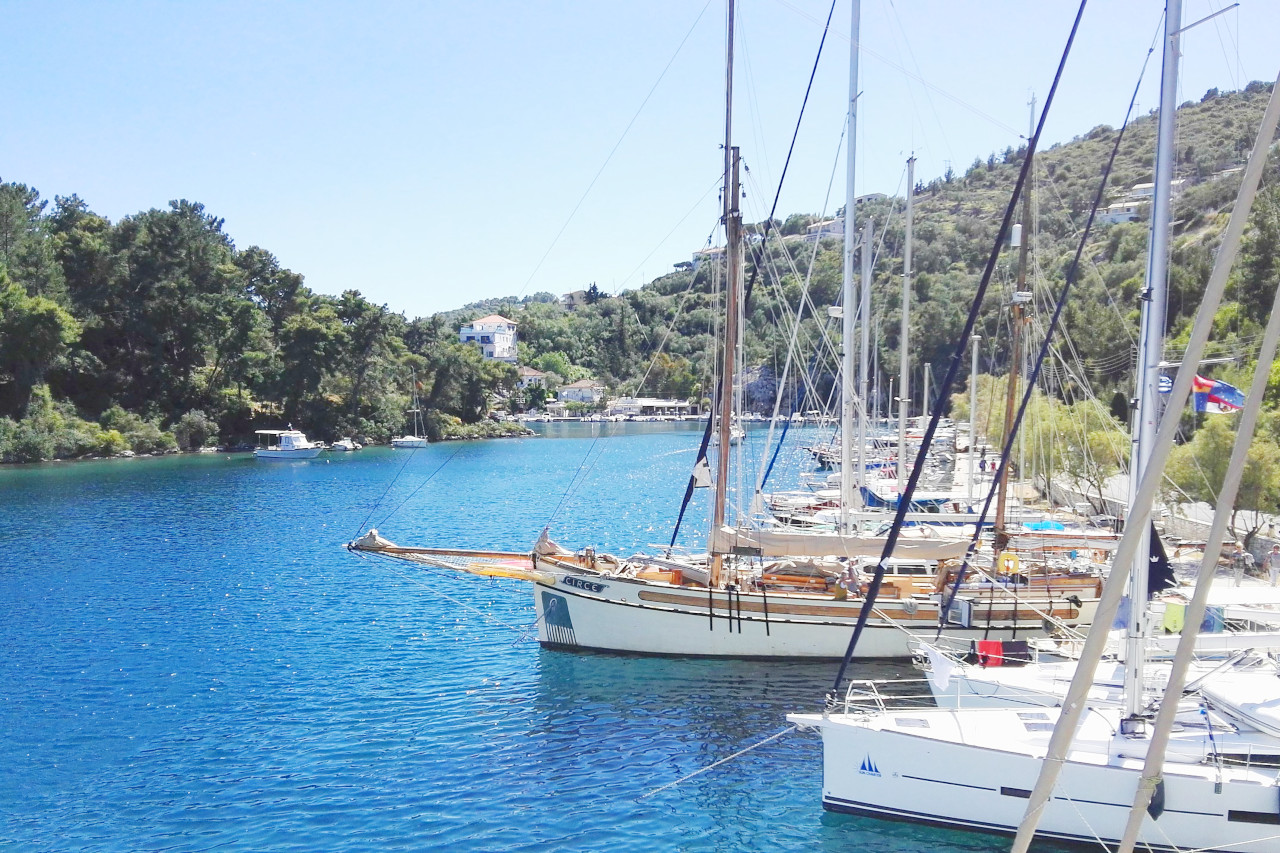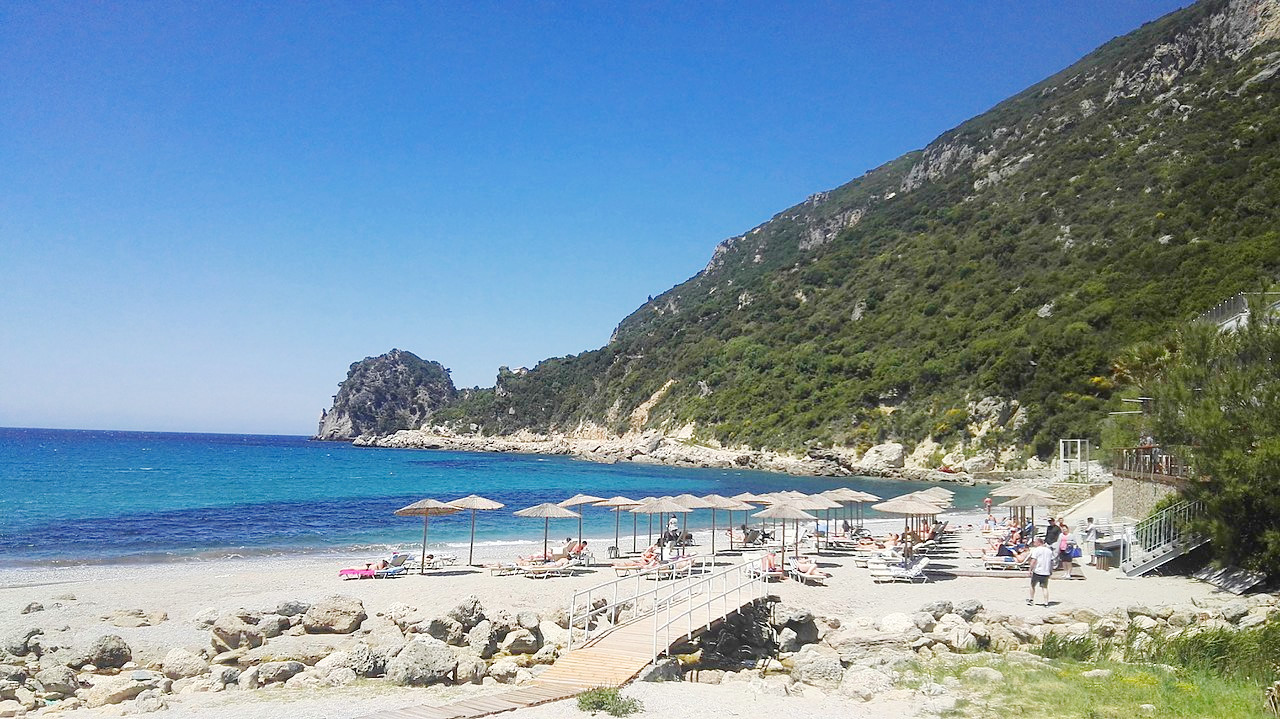The Geography of the
Ionian Islands
Why visit the Ionian Islands?
The Ionian Islands is the collective name for the islands lying off the west coast of Greece. Corfu is generally considered one the most beautiful of all the Greek isles, although the island is thickly settled, and much of the surface is covered with olive groves. Cephalonia, the largest of the Ionian Islands, is almost directly opposite the Gulf of Corinth. The whole island is covered with rocky hills, and dark pine woods are a most striking feature in mountain scenery. Neaby is the rocky island of Ithaki generally identified with Homer's Ithaca, the land where Odysseus, the king of this island hailed from.
Contents
Map
 Relief map of the Northern Ionian Islands
Relief map of the Northern Ionian Islands
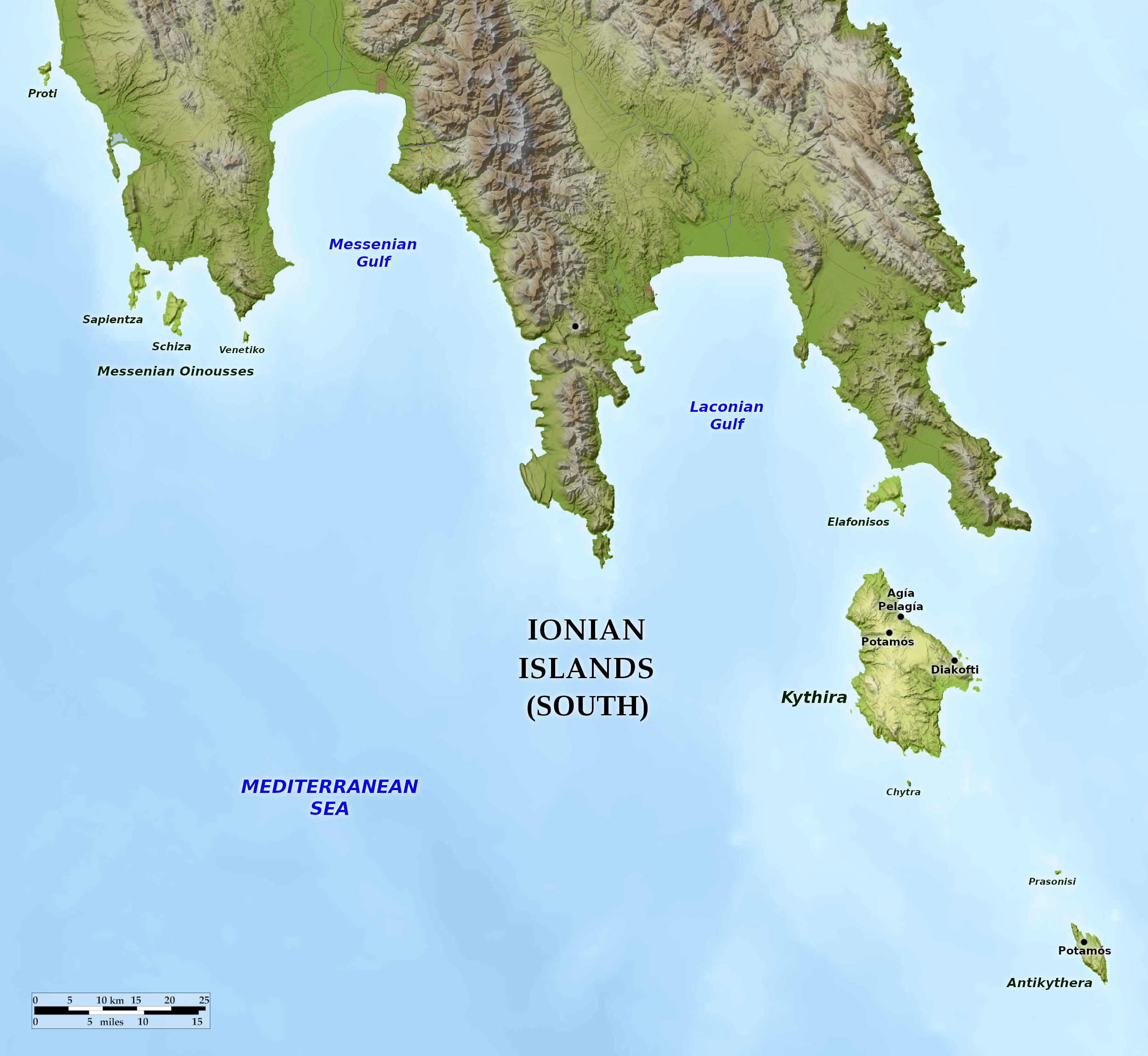 Relief map of the Southern Ionian Islands
Relief map of the Southern Ionian Islands
What is the landscape of Ionian Islands like?
The Ionian Islands are a group or chain of islands in the Ionian Sea, about 40 in number, stretching along the west and southwest coast of Greece. The seven main islands are, from north to south:
- Kerkyra, usually known as Corfu in English
- Paxi, also known as Paxos in English
- Lefkada, also known as Lefkas in English
- Ithaki, usually known as Ithaca in English
- Kefalonia, often known as Cefalonia or Cephalonia in English
- Zakynthos, also known as Zante in English
- Kythira, also known as Cythera in English
There are many islets; the most important include: Othonoi, Antipaxos, and Antikythera.
The Ionian Islands are distinguished for beauty of scenery; no other part of southern Europe in this respect surpass them, at least in their finest parts. Their beauty they owe partly to the great variety of landscape; partly to luxuriant vegetation; partly to the mountains and distant views, and partly to the sea and sky. The vegetation consists of the olive, the cypress, and the pine; with undergrowth of myrtle, arbutus, and mastic tree, not to mention the orange groves and vineyards. Always in view are the mountains of mainland Greece—their summits a great part of the year covered with snow, and in the morning and evening reflecting the glorious tints of the rising and setting sun. The sea is that of the Mediterranean in perfection, clear as crystal, and of the most perfect blue,—rivalling the sky in its colour and purity.
The valleys form a very remarkable part of the scenery. They form basin-like hollows or valleys without any apparent outlet. Whether under water, or covered with crops, they are strongly contrasted with the rugged and naked heights by which they are commonly surrounded. And when cultivated they constitute scenes of great beauty and interest in their seclusion, like oases in a rocky desert. Limestone caverns, too are common sight; many of them are large, and some of them are of curious forms, and beautiful appearance:—the largest occur in Kythira, Kefalonia, Paxi, and Othonoi.
Kerkira (Corfu in English) is the most renowned of the Ionian Islands. Its spectacular scenery and tourist amenities make it an international holiday center. There are beautiful villas, romantic Venetian castles, and early 19th-century Georgian architecture dating from a period of British occupation. The 16th-century Cathedral is dedicated to St Spyridon, the island's patron saint.
What is the nature of Ionian Islands like?
The landscapes of the Ionian isles are dominated by the olive tree, covering the islands in vast groves. Another ubiquitous Greek tree is the pine, whose resin has since antiquity been used to caulk ships and to flavour retsina wine. The most beautiful variety is the Aleppo pine, which usually graces country chapels and the courtyards of old Venetian mansions. Other characteristic trees include the tamarisk, myrtle, and the occasional palm tree.
The high rainfall of the islands in the Ionian Sea has made them unusually rich in wild flowers and flowering fruit trees, bushes, and shrubs, particularly in Kerkira (Corfu) and Zakynthos. The latter island was known to the Venetians as Zante, which they called Fior de Levante, or Flower of the East. Zakynthos is famous for its sultana grapes, the basis for the currant trade that in times past made it the wealthiest of the Ionian isles.
What is the climate of Ionian Islands like?
The climate of the islands is in general very mild with a plentiful supply of rain. The summer months are hot and dry; the autumn showery but mild; the winter rainy and tempestuous; the spring mild and showery. Occasionally, the summer is protracted into the autumn, and occasionally the winter into the spring. The transition of the seasons, except from spring to summer, is generally abrupt. The hot and dry weather of summer is commonly brought to an end by thunderstorms, attended with heavy showers. Northerly winds maintain the winter season, and often prevail into March; the southerly winds bring in the spring, and, when they predominate, as they generally do in the beginning of April, then spring is truly established—the foliage may almost be seen to expand, there is such a sudden burst of vegetation.
| Climate data for Kerkyra | |||||||||||||
|---|---|---|---|---|---|---|---|---|---|---|---|---|---|
| Month | Jan | Feb | Mar | Apr | May | Jun | Jul | Aug | Sep | Oct | Nov | Dec | Year |
| Average high °C (°F) | 13.9 (57.0) | 14.2 (57.6) | 16.0 (60.8) | 19.0 (66.2) | 23.8 (74.8) | 28.0 (82.4) | 30.9 (87.6) | 31.3 (88.3) | 27.6 (81.7) | 23.2 (73.8) | 18.7 (65.7) | 15.3 (59.5) | 21.8 (71.2) |
| Daily mean °C (°F) | 9.7 (49.5) | 10.3 (50.5) | 12.0 (53.6) | 14.9 (58.8) | 19.6 (67.3) | 23.9 (75.0) | 26.4 (79.5) | 26.3 (79.3) | 22.7 (72.9) | 18.4 (65.1) | 14.3 (57.7) | 11.1 (52.0) | 17.5 (63.5) |
| Average low °C (°F) | 5.1 (41.2) | 5.7 (42.3) | 6.8 (44.2) | 9.2 (48.6) | 12.9 (55.2) | 16.4 (61.5) | 18.4 (65.1) | 18.8 (65.8) | 16.5 (61.7) | 13.4 (56.1) | 9.9 (49.8) | 6.8 (44.2) | 11.7 (53.1) |
| Average rainfall mm (inches) | 136.6 (5.38) | 124.6 (4.91) | 98.1 (3.86) | 66.7 (2.63) | 37.0 (1.46) | 14.1 (0.56) | 9.2 (0.36) | 19.0 (0.75) | 81.3 (3.20) | 137.7 (5.42) | 187.4 (7.38) | 185.6 (7.31) | 1,097.3 (43.20) |
| Source: Hellenic National Meteorological Service | |||||||||||||
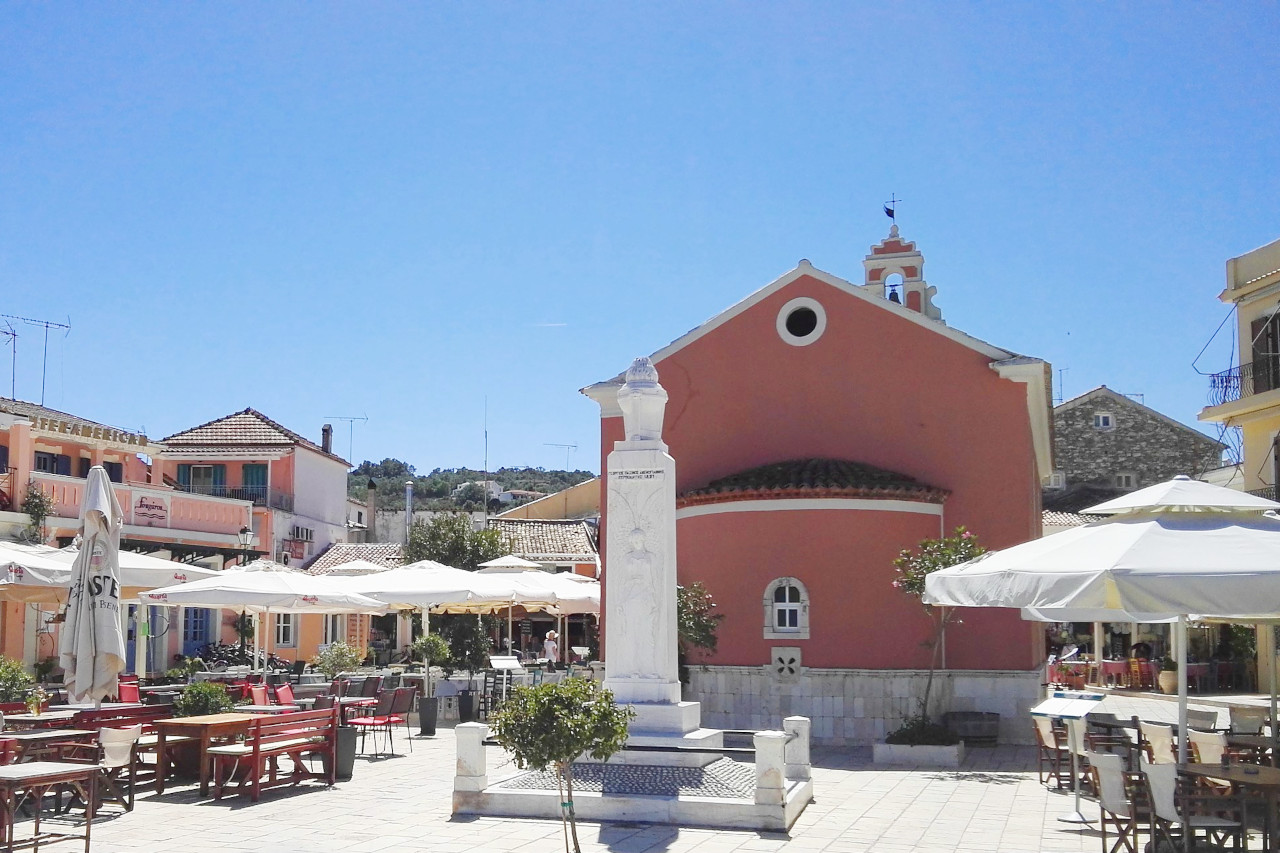 Market square and church on Paxos
Market square and church on Paxos
The official websites
Ionian Islands

Legends in a stunning natural landscape
| Location: | Islands off the western coast of Greece |
| Coordinates: | 37° 45′ N, 20° 45′ E |
| Size: | • 450 km N-S; 350 km E-W • 280 miles N-S; 215 miles E-W |
| Terrain: | Low hilly islands with some mountainous areas |
| Climate: | Mediterranean. Hot, dry summers; mild, wet winters |
| Highest point: | Mount Ainos 1,628 m / 5,341 ft |
| Forest: | 31% (2010 est.) (source) |
| Population: | 207,855 (2011) |
| Population density: | Low (90/km²) |
| Capital: | Kerkyra |
| Languages: | Greek |
| Human Development Index: | Very high (0.888) |
